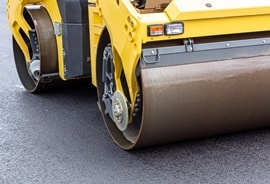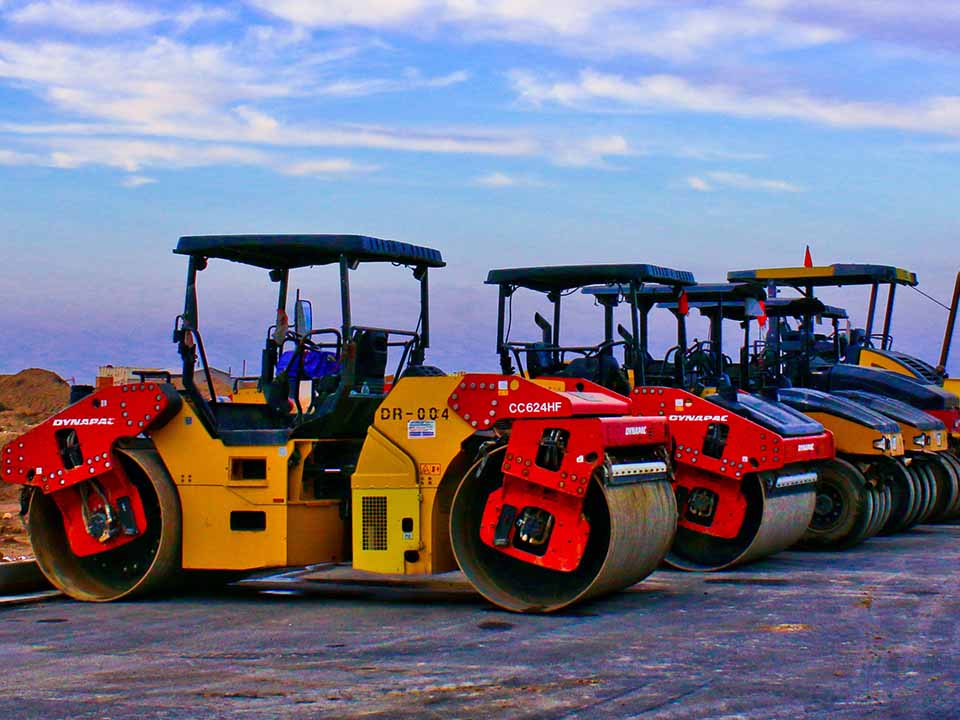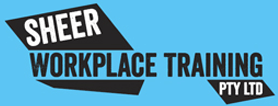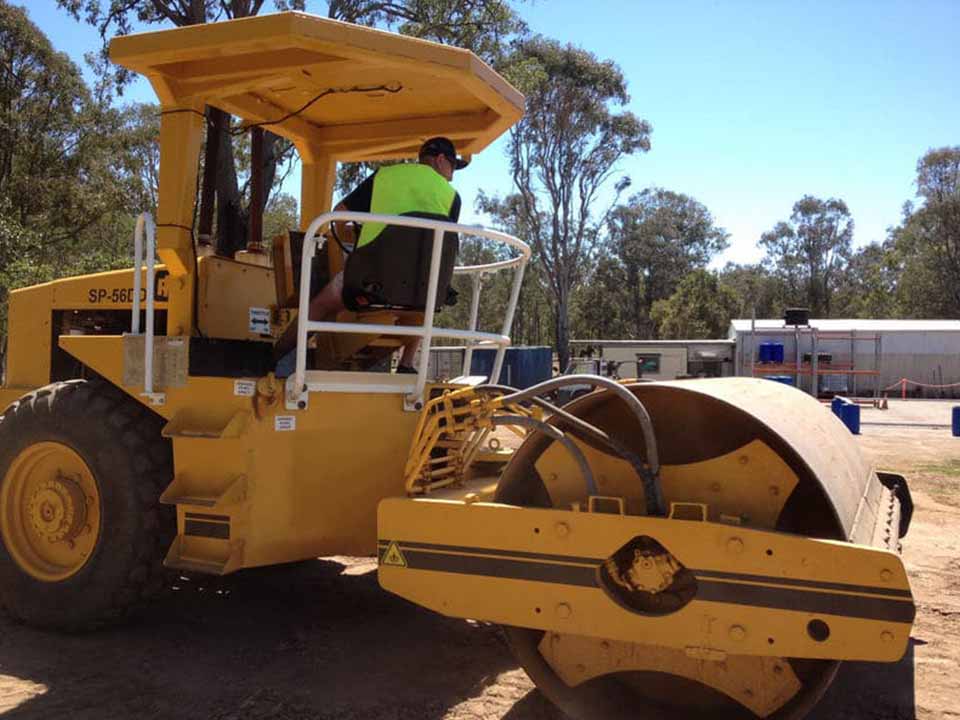Mastering roller operations in construction requires a unique set of skills essential for ensuring efficiency, safety, and quality. Dive into the world of construction with us and discover the skills that can make you indispensable on any project site, from soil compaction to asphalt smoothing. This guide is your ultimate roadmap, designed for both beginners eager to learn and experts aiming to polish their skills.
Pre-Operational Checks and Preparation for Roller Operations
Before the commencement of any roller operation, it’s crucial to perform comprehensive pre-operational checks. This process involves:
- Inspection of Controls and Instruments: Before operation, it is critical to inspect all controls and instruments on the roller. This includes checking the brakes, steering, and hydraulic systems to ensure everything is functioning correctly.
- Checking Fluid Levels: Fluid levels, such as oil, coolant, and hydraulic fluid, must be checked and topped up if necessary. This step is crucial for the smooth operation of the roller and to prevent mechanical failures.
- Verifying Safety Equipment: Safety equipment such as seat belts, horns, and emergency stop buttons must be checked for proper functionality. Ensuring these elements are in working order is vital for operator safety.
- Tire and Wheel Inspection: Inspect the tires and wheels for any signs of wear or damage. Proper tire inflation and condition are essential for safe and effective operation.
- Assessing the Worksite: Prior to commencement, planning and preparing the worksite is essential. This includes assessing the terrain and identifying any potential hazards or obstacles.
- Reviewing Operational Plans: Understanding the project’s requirements and reviewing the operational plans to ensure the roller is used effectively. This step involves confirming the type of material to be compacted and the desired compaction level.
- Training and Certification Check: Ensuring that the operator has the necessary training and certifications, such as a statement of attainment for nationally recognised qualifications in roller operation.
Selecting, Removing, and Fitting Roller Attachments
One aspect of roller operations that requires specific skills and knowledge is the ability to select, remove, and fit various attachments. Depending on the task, different attachments may be necessary for effective operation. This process involves:
- Identifying Suitable Attachments: Selecting the correct attachments for the specific task, such as different drum types for asphalt or soil compaction.

- Attachment Compatibility Check: Ensuring that the chosen attachments are compatible with the specific roller model being used.
- Safe Attachment Procedures: Following safe procedures for attaching and removing equipment, including securing all locking mechanisms and verifying stability.
- Instruction Manual Consultation: Consulting the roller’s instruction manual for specific guidance on attachment procedures.
- Regular Inspection of Attachments: Regularly inspecting attachments for wear and tear and replacing them when necessary.
- Training in Attachment Handling: Operators should be trained in handling and changing attachments safely and efficiently.
- Record Keeping of Attachment Usage: Maintaining records of attachment usage to track wear and ensure maintenance schedules are followed.
Roller Operation Techniques for Compacting Materials
Compacting materials effectively is a core function of roller operations in construction. Operators must be proficient in various techniques to ensure uniform compaction, which is critical for the structural integrity of the construction project. This involves:
 Understanding Soil Types: Recognizing different soil types and adjusting compaction techniques accordingly.
Understanding Soil Types: Recognizing different soil types and adjusting compaction techniques accordingly.
Even Compaction Methods: Employing methods to achieve even compaction, such as overlapping roller passes and maintaining consistent speeds.
Depth of Compaction: Understanding the required depth of compaction for different materials and adjusting the operation of the roller to achieve this depth.
Moisture Content Management: Managing the moisture content of the material being compacted, which can significantly affect compaction quality.
Speed and Frequency Adjustment: Adjusting the speed and frequency of the roller to suit the material type and compaction requirements.
Monitoring Compaction Progress: Continuously monitoring the progress of compaction and making adjustments as necessary.
Use of Compaction Aids: Utilizing compaction aids such as water sprinklers or additives when necessary to achieve desired compaction levels.
Roller Operation Techniques for Sealing and Finishing
Beyond compacting materials, roller operators must also be skilled in techniques for sealing and finishing surfaces.
- Surface Inspection and Preparation: Before sealing, inspecting the surface for uniformity and ensuring it’s free from debris is crucial. Proper preparation ensures a high-quality seal and finish.
- Roller Angle and Pressure Adjustment: Adjusting the angle and pressure of the roller is essential for achieving a smooth finish. Operators must be skilled in making these adjustments based on the surface texture and project requirements.
- Sealing Techniques for Different Materials: Different materials require different sealing techniques. Operators should know the appropriate methods for asphalt, concrete, and other common materials.
- Edge Compaction and Finishing: Properly compacting and finishing the edges of a surface is crucial for durability. Techniques for achieving neat and strong edges are essential skills for operators.
- Temperature and Weather Considerations: The temperature and weather conditions can significantly affect sealing and finishing. Operators must understand how to adapt their techniques in different weather scenarios.
- Consistency in Roller Passes: Consistency in roller passes ensures a uniform and smooth finish. Operators must be proficient in maintaining consistent speed and pressure throughout the sealing process.
- Post-Compaction Inspection: After sealing and finishing, conducting a thorough inspection to ensure quality and identify any areas that require rework is a key skill for operators.
The operator must be adept at adjusting the roller’s operation to suit the specific requirements of the project, ensuring a high-quality finish.
Safe Relocation of Roller Equipment
The safe relocation of roller equipment is another critical skill. Operators must be able to safely operate the roller during transit to and from the worksite.
- Route Planning and Risk Assessment: Before relocating roller equipment, it’s essential to plan the route carefully, considering factors like road conditions, traffic, and obstacles. Conducting a risk assessment ensures that potential hazards are identified and mitigated.
- Securing the Roller for Transport: It’s crucial to properly secure the roller on the transport vehicle, using appropriate tie-downs and checks to ensure that the equipment is stable and will not shift during transit.
- Transportation Regulations Compliance: Understanding and adhering to national and local transportation regulations is vital. This includes weight limits, vehicle dimensions, and securing equipment.
- Use of Pilot Vehicles: In some cases, especially when moving large rollers, the use of pilot vehicles can enhance safety by alerting other road users to the presence of an oversized load.
- Training in Roller Transportation: Operators must receive specific training in safely operating the roller when loading and unloading it from the transport vehicle, as well as during transit.
- Emergency Procedures: Knowledge of emergency procedures in case of an incident during transportation is essential. This includes understanding how to safely handle breakdowns or accidents.
- Post-Transport Inspection: After relocation, conducting a thorough inspection of the roller to ensure no damage occurred during transport is critical for maintaining equipment integrity and safety.
Operator Maintenance and Housekeeping Practices for Roller Equipment
Effective maintenance and housekeeping practices are crucial for the longevity and reliability of roller equipment. Operators should be trained in:
-
- Regular Inspection and Maintenance: Routine inspections and maintenance of the roller are essential to ensure its optimal operation and longevity. This includes checking hydraulic systems, engines, and structural components.
- Cleaning Protocols: Proper cleaning of the roller not only maintains its appearance but also prevents the buildup of materials that can affect its performance. Operators must be skilled in effective cleaning techniques.
- Lubrication Schedules: Regular lubrication of moving parts is crucial to prevent wear and tear. Operators should be trained in identifying lubrication points and adhering to maintenance schedules.
- Record Keeping: Keeping detailed records of maintenance and repairs helps in tracking the equipment’s health and planning future maintenance work.
- Identifying Wear and Tear: Operators must be adept at identifying signs of wear and tear and know when to report these issues for repair or replacement, to prevent equipment failure.
- Safe Storage Practices: When not in use, the roller should be stored safely to protect it from environmental elements and vandalism. Operators must know the correct procedures for safe storage.
- Handling Fuel and Other Fluids Safely: Proper handling and storage of fuels and other fluids used in the roller are essential for safety and environmental protection. This includes understanding spill management and disposal procedures.
Why Choose Sheer Workplace Training for Roller Operations Certification
At Sheer Workplace Training, located in Brisbane (Hemmant and Paget), we pride ourselves on delivering nationally recognised training that equips our students with the essential skills for conducting roller operations in construction. Our courses, including RIIMPO317F Conduct Roller Operations, provide a comprehensive learning experience that covers all aspects of roller operation, including selecting, removing, and fitting attachments, and safely operating the equipment.
Our training ensures that upon completion, participants receive a statement of attainment that acknowledges their skills and knowledge in this field. This certification is a testament to the quality and rigor of our training programs, making our graduates highly sought after in the civil construction industry.
We encourage readers to engage with our content, share their experiences, and consider enrolling in our training programs to further their careers in construction. For more information, please feel free to contact us at Sheer Workplace Training. Let’s build your skills for a successful career in construction together!



Leave A Comment